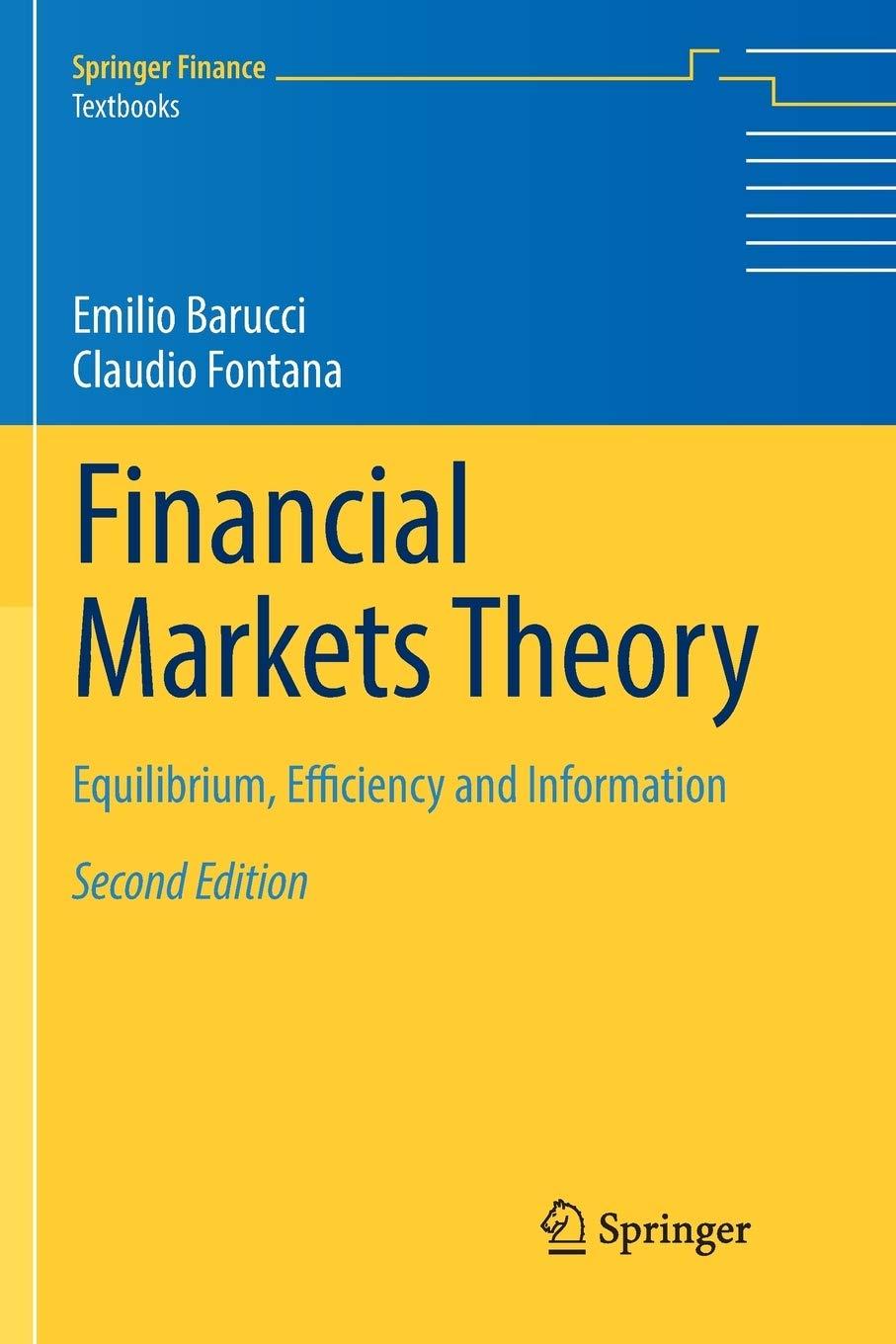Consider a risk free asset with return (r_{f}=1.1) and two risky assets with normally distributed returns (left(tilde{r}_{1},
Question:
Consider a risk free asset with return \(r_{f}=1.1\) and two risky assets with normally distributed returns \(\left(\tilde{r}_{1}, \tilde{r}_{2}\right)\) with \(\mathbb{E}\left[\tilde{r}_{1}\right]=1.2, \mathbb{E}\left[\tilde{r}_{2}\right]=1.3\) and \(\sigma^{2}\left(\tilde{r}_{1}\right)=4, \sigma^{2}\left(\tilde{r}_{2}\right)=9\) and correlation \(ho\).
(i) Determine the portfolio frontier composed by the two risky assets only.
(ii) In the case where \(ho=0.5\), determine the minimum variance portfolio \(w^{\mathrm{MVP}}\) and the corresponding variance \(\sigma^{2}\left(\tilde{r}_{w^{\mathrm{MVP}}}\right)\).
(iii) In the case where \(ho=0.5\), determine the tangent portfolio \(w^{\mathrm{e}}\).
(iv) Consider the problem of an agent maximizing the expected exponential utility (with \(u(x)=-\exp (-a x)\) ). Show that the optimal portfolio \(w^{*}(a)\) for such an agent is given by a multiple of the tangent portfolio \(w^{\mathrm{e}}\), as shown at the end of Sect. 3.2. Give conditions on the risk aversion parameter \(a\) so that the investment in the portfolio \(w^{\mathrm{e}}\) is greater than one.
(v) Determine the optimal portfolio that minimizes the variance, with and without the risk free asset, for the given expected return \(\mu=1.25\).
(vi) Verify that the portfolio \(w^{\prime}=(0.6,0.5)\) (with the remaining proportion of wealth being invested in the risk free asset) does not belong to the portfolio frontier.
Step by Step Answer:

Financial Markets Theory Equilibrium Efficiency And Information
ISBN: 9781447174042
2nd Edition
Authors: Emilio Barucci, Claudio Fontana





